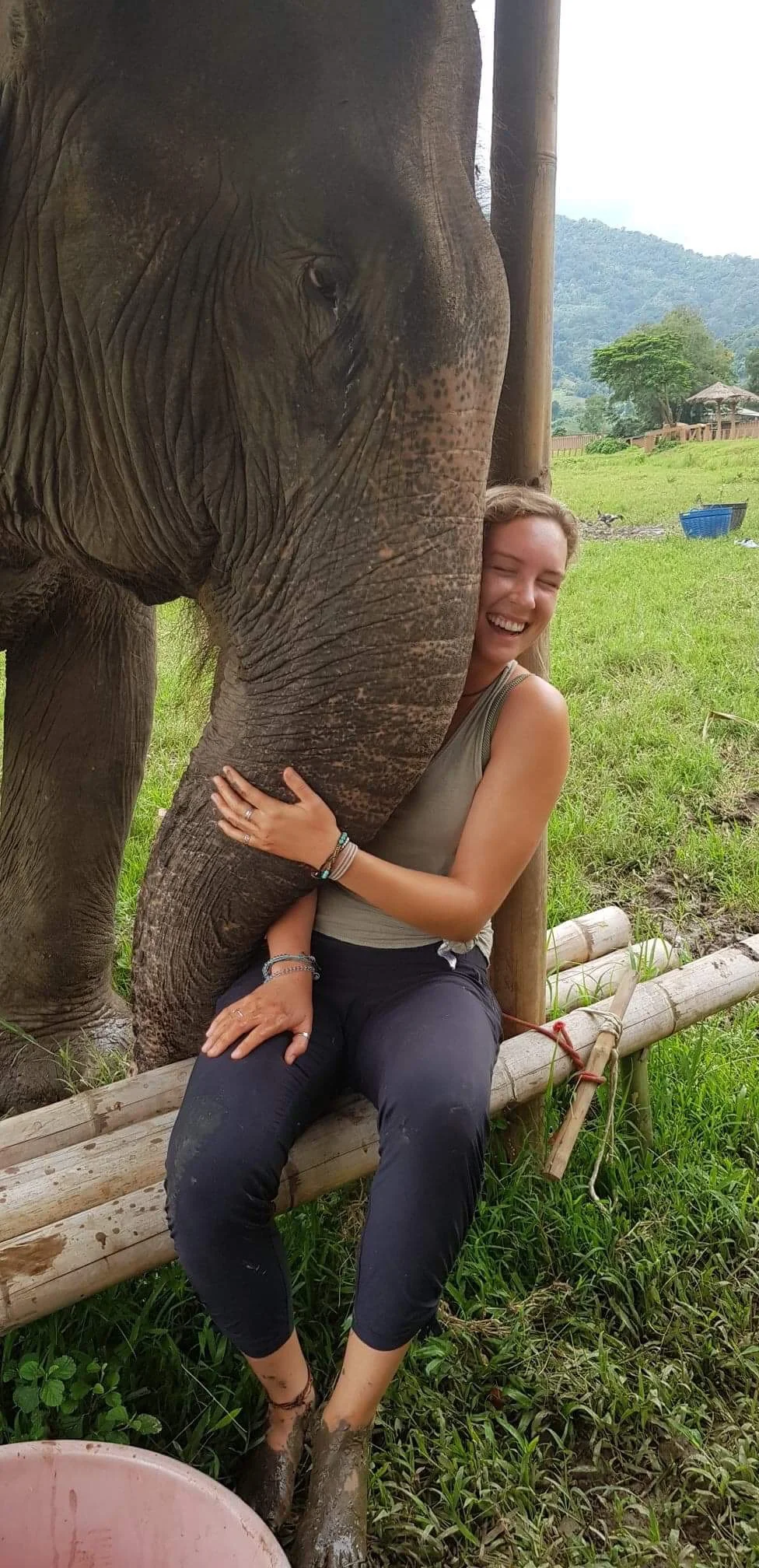GENTLE GIANTS.
July 3, 2018
A couple days ago I visited the Elephant Nature Park in the rural outskirts of Chiang Mai, a city located in Northern Thailand. Recently I have seen a lot of photos of people, friends and others, posing with elephants in Thailand. As a biologist and an advocate of animal conservation, I always wondered about the ethics behind the photos. It looks awesome, but why were these elephants in captivity and what were people doing interacting with them outside of the wild?
I finally got some answers after this experience at the sanctuary and talking with the guy, Bancha, who showed me and 5 other people the life of these elephants. For many years, elephants have been abused and used in all sorts of harmful trades—from performing in the circus to assisting in the logging industry. They have been used as a tourist attraction, suffering the costs of human entertainment by people who seek to ride, train, and play with them. Many of these majestic, gentle creatures have undergone years of mistreatment by humans and have been removed from their wild habitat. Even today, over 20 organizations and elephant parks in Thailand continue to promote this harmful treatment and advertise “full days of elephant riding and training.”
However, the Elephant Nature Park that we visited is one of the few ethically sound and conservation based parks that exists in Thailand (I found out about it from a friend who was recently there). The 80 elephants that roam around here have all been rescued from a previous life of abuse—whether used in the circus, on the streets by people to beg for money, or in logging.
It was a humbling and amazing experience to interact with these gentle giants. We learned to care for them by feeding them tons (and I mean tons) of pineapple, watermelon and bananas, bathing them in the muddy river and learning to allow them to communicate with us, instead of people hassling and forcing communication with them.
Holding up a piece of watermelon, I felt a soft trunk wrap around part of my hand as the elephant grabbed the fruit and threw it into her huge mouth, instantly extending her trunk for another piece. I looked at the three huge bins of fruit and asked Bancha if the elephants would get full, and he laughed and told me they eat over 700 pounds per day. I sat down and one of them leaned its face up against me and used its trunk to smoosh me into the side of the bamboo bench...it was the best type of smothering love ever.
We walked with them on a hike up a small mountain, and it was so entertaining to watch them wander off into the jungle and grab massive amounts of vegetation with their trunks, since apparently the massive quantity of fruit we supplied them was simply a small snack. As they plundered down the muddy hill, Marley and I were cracking up at how clumsy they were—big feet extended in all directions, they caused a small avalanche on the way down.
There were some elephants that we weren’t allowed to interact with, newer ones to the park who were just starting to be rehabilitated, and some of the young ones. We walked past one elephant that was throwing dirt on her back to stay cool, and Bancha informed us that she was blind in both eyes, stabbed by loggers she used to work for. It was incredibly sad to hear the stories behind these elephants, but amazing to see a place that allows them a good life free from abusive captivity. It is an example of positive ecotourism—enabling people to volunteer and work with elephants to rehabilitate them and fund their food and care instead of contribute to their neglect. So I would advise anyone going to Thailand to see elephants—look into where you are going. Do some research. Don’t just choose anywhere so you can get a picture, because many places still exploit elephants in efforts to make money off of tourists. They are truly the most incredible, friendly, curious and intelligent creatures and deserve nothing less than a happy life full of endless bananas and mud baths.
